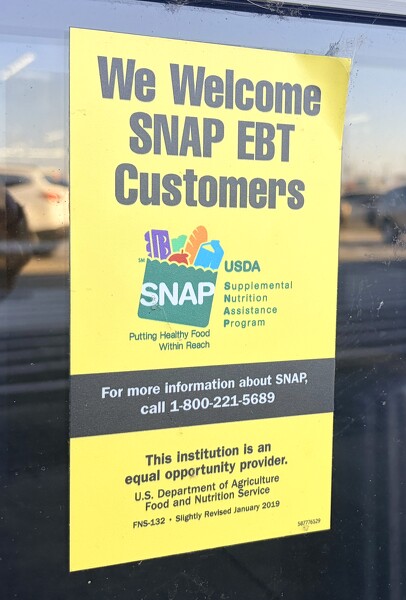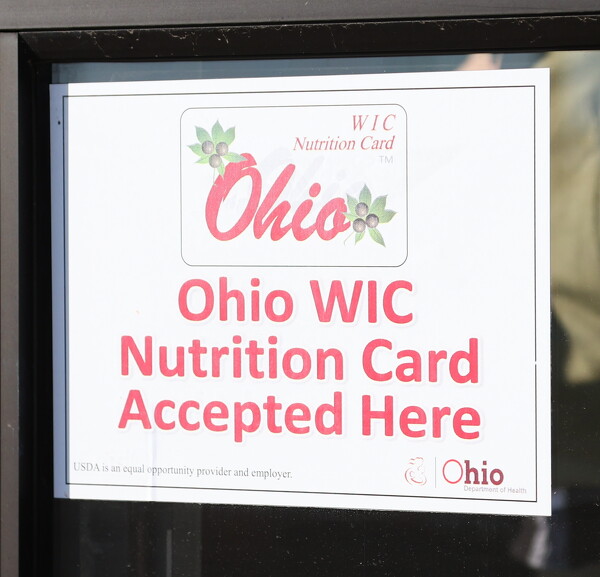
Outside of reopening the government, legislation remains the only way to guarantee all scheduled SNAP payments are made. About 906 households in Mercer County were using SNAP benefits as of September.
CELINA - In Mercer County, 906 households, representing about 4% of the population, are at risk of losing their federal SNAP benefits due to the federal government shutdown, Mercer County Commissioners learned on Tuesday morning.
The Supplemental Nutrition Assistance Program, or SNAP, helps about one in eight Americans buy groceries. In September, 1,073 adults and 668 children in Mercer County received a total of $272,612 in SNAP benefits, according to L. Elizabeth Rinderle, the income maintenance administrator with Mercer County Job and Family Services.
The federal program's contingency fund cannot legally cover benefits without a congressional appropriation. Outside of reopening the government, legislation remains the only way to guarantee that all scheduled SNAP payments are made, according to a news release from Ohio Senator Jon Husted's Office.
"So it's huge," said Rinderle, who has worked at JFS for nearly 30 years. "We've had government shutdowns before. They have never taken away SNAP before. So I've been here a long time and this is completely brand new."
Rinderle and Angela Nickell, director of Mercer County JFS, provided an update on the status of SNAP funding amid the ongoing shutdown. The county agency determines whether residents qualify for SNAP benefits.
The federal government pays the full cost of SNAP benefits and splits the cost of administering the program with the states, which operate it, according to
Center on Budget and Policy Priorities.
"Really, nothing much has changed until they solve this government shutdown issue," Nickell said, pointing to an Ohio Department of Job and Family Services email sent to her Oct. 24.
The U.S. Department of Agriculture's Food and Nutrition Services issued a memo Oct. 10 stating that if the federal shutdown continues, "there will be insufficient funds to pay full November SNAP benefits," the email notes.
Officials in Louisiana, Vermont and Virginia have pledged to provide some type of backup food aid for recipients even while the shutdown stalls the federal program, though state-level details haven't been announced.
More funding for food banks and pantries is planned in states including New Hampshire, Minnesota, California, New Mexico, Connecticut and New York.
The USDA advised Friday that states won't be reimbursed for funding the benefits. It said that SNAP benefits will not be issued on Nov. 1 if the shutdown persists.
Commissioner Dave Buschur asked Rinderle and Nickell if they'd heard anything about Gov. Mike DeWine potentially supplementing SNAP amid the funding freeze.
"I don't think they trust that they'd get reimbursed, is my feeling," Rinderle said.
Nickell echoed her colleague's doubts about the prospect of state intervention.
"I agree with Elizabeth," she said. "I can't see the state backing this at all. If we don't have the federal funds, I can't see that Ohio can afford that."
State Rep. Latyna Humphrey, D-Columbus, on Monday sent a letter to DeWine urging him to take action to help the 1.4 million Ohioans who she said could be left without the SNAP payments starting Nov. 1 if the federal government shutdown continues past Friday.
At the federal level, U.S. Senator Jon Husted threw his support behind the Keep SNAP Funded Act of 2025, which the Ohio Republican said would provide for full funding for SNAP during the government shutdown.
"About 1.4 million Ohioans rely on SNAP to put food on the table. Ohio families shouldn't pay the price for Washington's political games," Husted said in a statement. "I will continue to vote to reopen the government, and I urge my Senate Democratic colleagues to do the same. But for now, we cannot allow millions of innocent Americans to go without the benefits they rely on."
Nickell hopes some kind of legislative remedy materializes to maintain SNAP funding for eligible recipients.
"I still hope and pray that something gets signed this week," she said. "I can't imagine it's the intention of the Legislature to hurt families, but I don't know about political ideologies."
Nationally, most SNAP participants are families with children, more than 1 in 3 include older adults or someone with a disability, and close to 2 in 5 are households where someone is employed. Most have incomes that put them below the poverty line, about $32,000 in income for a family of four, according to an analysis by the Center on Budget and Policy Priorities.
The average monthly benefit is $187 per person.
"If you're a household of five, you get benefits for a household of five," Rinderle told The Daily Standard. "A household of one, the maximum amount they can get is $298. … A household with seven can get $1,571. Now, that's with zero income or that your income works down to zero."
Not everyone receives their SNAP benefits on the first day of the month, though many beneficiaries get them early in the month, with some differences by state.
"They get the full increment," Rinderle said about Mercer County SNAP recipients. "The last numbers of their case number … (determines) what periods of the month they get those (benefits)."
U.S. House District 5, which includes Mercer and Van Wert counties, has 81,486 SNAP recipients who together are eligible for a total of $13.3 million monthly, according to Ohio's SNAP Data Map, last updated Oct. 7.
Every $1 in SNAP benefits generates up to $1.50 in local economic activity. Those dollars keep grocery stores open, farmers paid and jobs in the towns where they are spent, asserts Feeding America, a nationwide network of food banks, food pantries and local meal programs.
"It's going to hurt the retailers and the customers," Rinderle said about the economic fallout from a SNAP freeze.
"I would say most of our families are working families," Nickell said of local SNAP recipients.
"Absolutely," Rinderle confirmed. "Most of them do have some form of income coming in … but with all the high prices and everything this is huge."
She added that "pretty much everyone on SNAP is on Medicaid. Not everyone on Medicaid is on SNAP."
-The Associated Press contributed to this report.

Special Supplemental Nutrition Program for Women, Infants and Children, or WIC, is separate from SNAP.